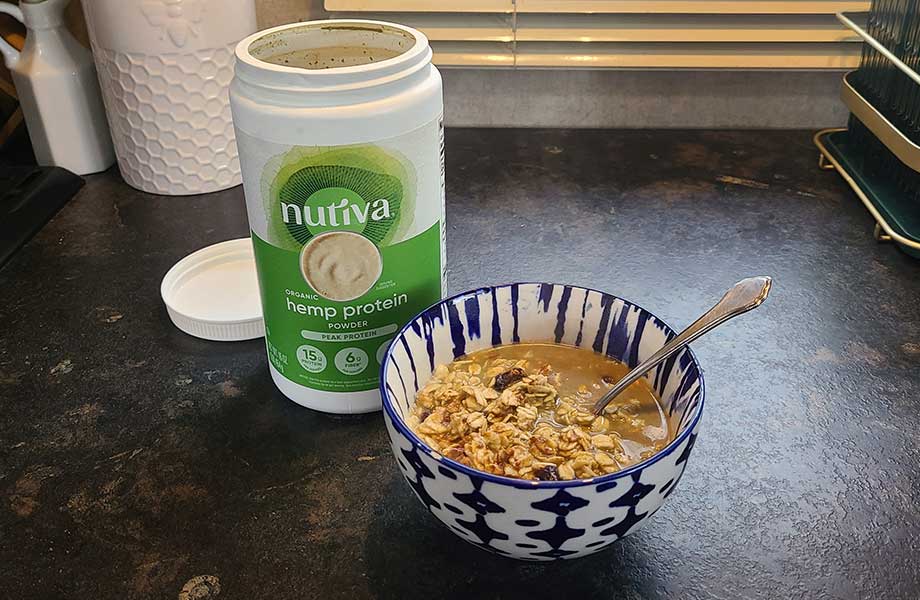Oatmeal has enjoyed a reputation as a wholesome, nutritious breakfast food for decades, but how does it fit into a higher-protein eating plan? Is there any truth to claims by online influencers that oatmeal is unhealthy?
RELATED: High-Protein Breakfast
As a registered dietitian, I’ll discuss how much protein is in oatmeal, review its evidence-based health benefits, and provide tasty tips for optimizing the protein content of your morning bowl of oats.
Medical disclaimer: This article is intended for educational and informational purposes only. It is not intended as a substitute for medical advice. For health advice, contact a licensed healthcare provider.
Is Oatmeal a Good Source of Protein?
The protein content of oatmeal varies slightly depending on the type of oats:
- Instant oatmeal (28g packet): 4 grams
- Old-fashioned oats/rolled oats (½ cup, dry): 5 grams
- Steel-cut oats (¼ cup, dry): 5 grams
- Oat groats (¼ cup, dry): 5 grams
A serving of oatmeal contains about 4 to 5 grams of protein, so it isn’t a particularly great source of protein on its own. It can, however, help you meet your daily protein goals and serve as a nutrient-dense base to which you can add higher-protein toppings.
RELATED: What Should My Macros Be?
How to Add Protein to Oatmeal
Oats are incredibly versatile, so there are many ways to up the protein content and the flavor. I’ve listed some protein-rich add-ins below, starting with the highest protein content.
Protein Powder
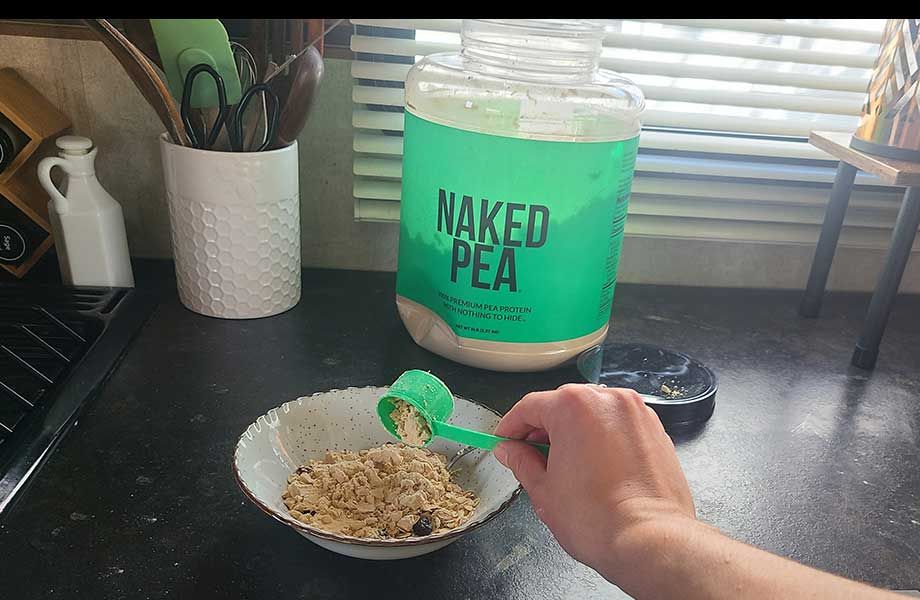
Protein powder is by far the easiest way to boost the protein content of your oatmeal and is available in a variety of flavors. A typical serving of whey or plant-based protein powder will add an impressive 20 to 25 grams of protein to your breakfast. Just be sure to add extra liquid when preparing your oats!
RELATED: Best Protein Powder
Greek Yogurt
Topping your oatmeal with a half cup of Greek yogurt will add about 10 grams of protein. Most plant-based yogurts are pretty low in protein, but soy yogurt or other non-dairy yogurts that are specially fortified are good sources.
Pumpkin Seeds
Magnesium-rich pumpkin seeds have 8 grams of protein per one-ounce serving. They provide a burst of color and are the perfect topping for pumpkin spice oatmeal!
RELATED: Best Magnesium Supplements
Dairy, Soy, or Pea Milk
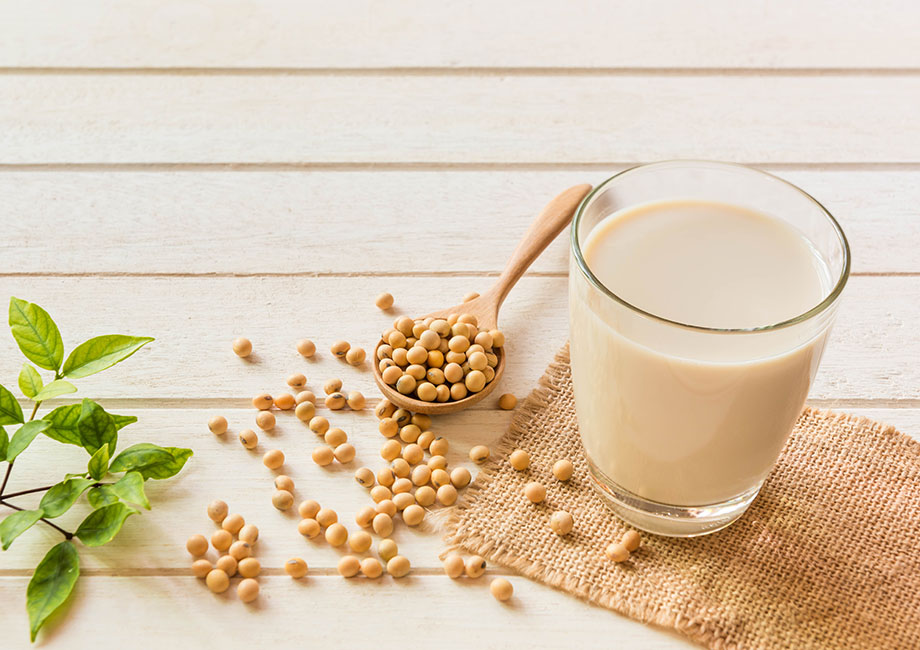
Simply cooking hot oatmeal or mixing overnight oats—one of our favorite high-protein meals—with milk rather than water will add 7 to 8 grams of protein. Soy and pea milk provide the same amount, but other dairy-free milks like almond, oat, and rice milk only add about 1 to 2 grams.
Nut or Seed Butter
Stirring peanut butter, almond butter, or sunflower seed butter into oatmeal will add creaminess, heart-healthy fats, and 7 to 8 grams of protein.
RELATED: Best Heart-Healthy Meal Delivery
Chopped Almonds
A one-ounce serving of chopped almonds contains 6 grams of protein and will add much-needed texture and crunch.
Egg Whites

Unconventional but effective, quickly stirring ¼ cup of egg whites into cooked oatmeal increases the protein content by 6 grams. Egg whites have a more neutral flavor, so this protein addition can work for sweet and savory oatmeal.
RELATED: How to Get More Protein
Nutritional Yeast
Even more unconventional is the addition of nutritional yeast. Beloved by vegans, nutritional yeast has a pleasantly “cheesy” flavor and mixes well in hot oatmeal. Two tablespoons provide about 4 to 6 grams of protein. Try it in savory oatmeal with sauteed vegetables!
Hemp Seeds
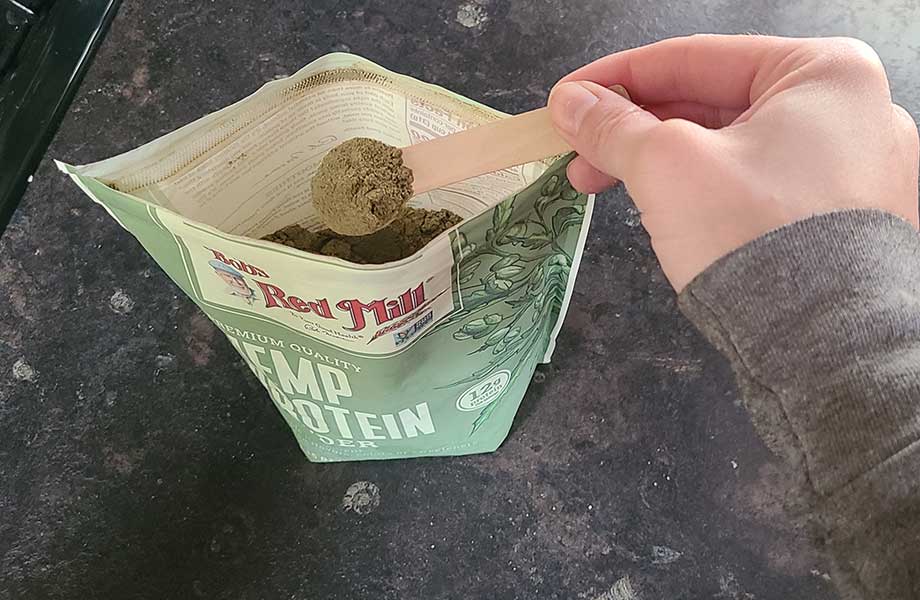
Tiny but mighty, hemp seeds are rich in anti-inflammatory omega-3 fatty acids and contain 3 grams of protein in 1 tablespoon.
Chia Seeds
Chia seeds, another tiny seed, are rich in omega-3s and calcium and provide 3 grams of protein per tablespoon.
RELATED: 10 High-Protein Meal Delivery Options
Health Benefits of Oatmeal
As a nutritious whole grain, the health benefits of oats1 are almost too many to count. A morning bowl of oats can help improve your health in the following ways:
Helps Lower LDL cholesterol
The most famous health benefit of oatmeal is its ability to lower cholesterol levels. Importantly, it lowers LDL cholesterol—the “bad” type of cholesterol associated with an increased risk of heart disease, according to a November 2020 study published in The Lancet2.
This cholesterol-lowering effect is due largely to beta-glucan, a specific type of soluble fiber found in particularly high amounts in oats and barley.
Helps Manage Blood Sugar Levels
Like other whole grains, oats are classified as complex carbohydrates thanks to the 4 grams of fiber in a half cup. Complex carbs—which also happen to be the best carbs for bodybuilding—are digested over a longer period of time than refined grains. This means the carbs from oats are absorbed into the bloodstream more slowly, preventing excessive spikes in blood sugar.
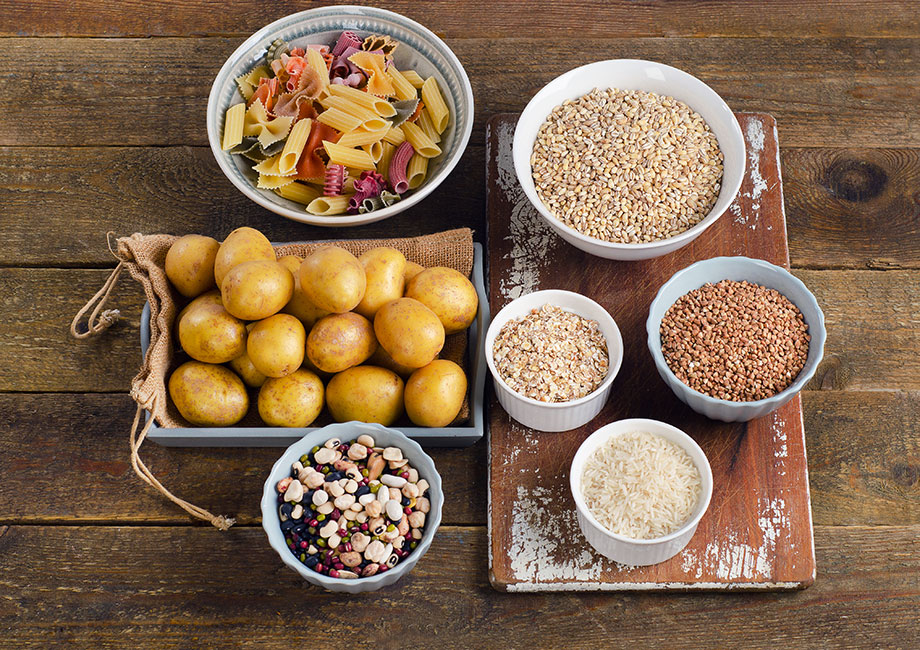
Can help with weight management
The fiber in oats can also help you lose body fat. Fiber makes meals more filling and satisfying, so having whole grain oats in the morning or as an afternoon snack may keep you from feeling hungry soon after a meal or mindlessly snacking in the evening.
May help prevent cancer
Whole grains (like oats) are one food that has been shown in studies to help reduce the risk of colorectal cancer, according to the American Institute for Cancer Research3 (AICR). This is likely due to their dietary fiber, which is known to help improve gut health.
Oats are also rich in antioxidants and phenolic acids4, compounds which may have anti-inflammatory and anti-cancer effects and are concentrated in oat bran. Fortunately, all oat products (including instant oats) are whole grain, meaning the oat bran is still present.
May help improve gut health
Diets high in fiber-rich cereal grains like oatmeal are known to increase beneficial bacteria5 in the gut while reducing harmful bacteria. Gut bacteria ferment dietary fiber and produce anti-inflammatory short-chain fatty acids, which further improve the integrity of the gut lining.
Of note, people managing Celiac disease should choose gluten-free certified oats to avoid digestive issues.
Benefits of a Higher Protein Diet
Protein deficiency is almost non-existent in developed countries, so most people don’t need to obsess over their protein intake.
Higher-protein diets can, however, provide significant benefits for some people. Let’s discuss how higher-protein diets can benefit you in more detail:
Helps build muscle
During challenging resistance training workouts, the muscles get slightly torn up. The body requires amino acids from food to repair the muscle and build muscle size and strength, so people trying to build muscle have higher protein requirements than the average person.
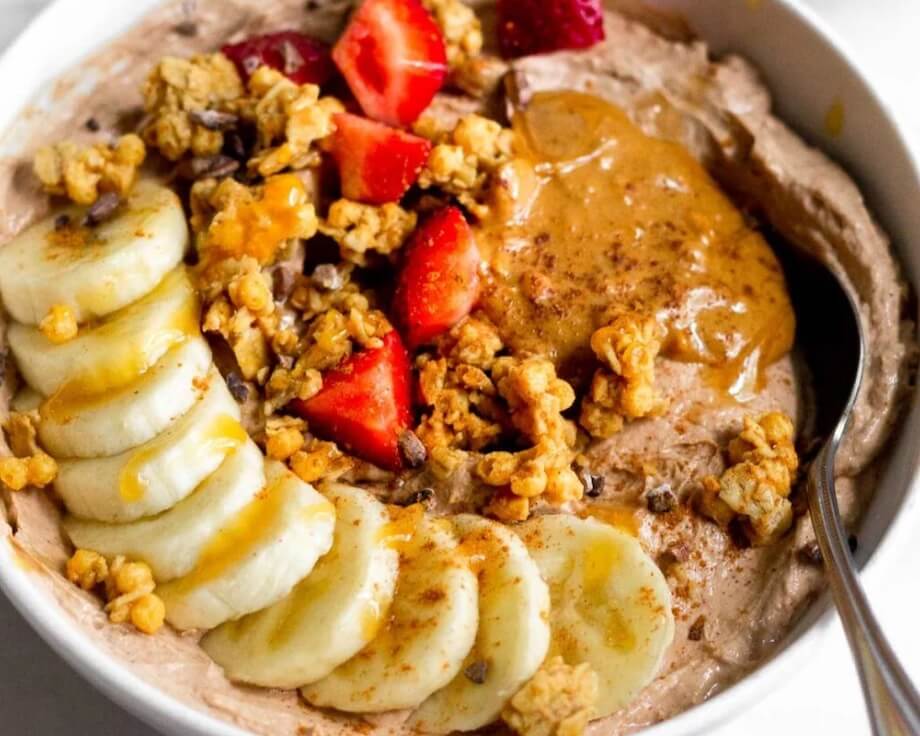
Can help raise your metabolism
Compared to carbohydrates and fat, it takes more effort for the body to digest, absorb, and utilize protein. This phenomenon is known as the “thermic effect of food5” and means that a higher-protein diet can help you lose fat by burning more calories throughout the day.
RELATED: How Much Protein Is Too Much?
Makes meals more filling
Protein is known for increasing satiety. Said another way, it makes meals more filling. If you’ve had a plain fruit smoothie or bowl of oatmeal for breakfast and felt hungry soon after, it’s likely because you didn’t have enough protein at that meal. You may want to consider one of my suggestions above for oatmeal additions or one of these protein smoothie recipes.
Supports muscle quality during aging
Our muscle quality tends to degrade as we age. As described in a 2022 review published in the Journal of Cachexia, Sarcopenia and Muscle6, the muscles become infiltrated with fat tissue, which can lead to atrophy and weakness over time in a condition known as sarcopenia.
Resistance exercise is often recommended for older adults to help mitigate sarcopenia, and a higher-protein diet can provide necessary essential amino acids for muscle maintenance.
RELATED: How Much Protein Do I Need?
How Much Protein Is In Oatmeal? Final Thoughts
Oatmeal is a nutrient-dense, fiber-rich whole grain that fits well in a healthy diet.
Oatmeal contains about 4 to 5 grams per serving, meaning it isn’t a great source of protein on its own. If you’re trying to follow a higher-protein diet, oatmeal is best eaten as a whole grain base for higher-protein ingredients like:
- Nut butters
- Nuts
- Seeds
- Greek yogurt
- Protein powder
- Milk (dairy, soy milk, or pea milk)
Looking for even more ways to increase your protein intake? Check out our dietitian-approved list of protein snack ideas!
How Much Protein Is In Oatmeal? FAQs
Is oatmeal a good source of protein?
Oatmeal contains some protein but isn’t considered a particularly great source of it. A standard half-cup serving of dry oats has about 5 grams of protein and is a good base for adding other high-protein foods.
What has more protein oatmeal or eggs?
Eggs and oatmeal are about equal in protein content, with 6 grams of protein in one large egg and 5 grams in a half-cup of dry oats.
How much protein does 1 cup of oats have?
According to the USDA, 1 cup of regular or quick oats (dry, not cooked) has 11 grams of protein.
These statements have not been evaluated by the Food and Drug Administration. This product is not intended to diagnose, treat, cure, or prevent any diseases.
References
- Paudel D, Dhungana B, Caffe M, Krishnan P. A Review of Health-Beneficial Properties of Oats. Foods. 2021;10(11):2591. Published 2021 Oct 26. doi:10.3390/foods10112591
- Mortensen MB, Nordestgaard BG. Elevated LDL cholesterol and increased risk of myocardial infarction and atherosclerotic cardiovascular disease in individuals aged 70-100 years: a contemporary primary prevention cohort. Lancet. 2020;396(10263):1644-1652. doi:10.1016/S0140-6736(20)32233-9
- American Institute for Cancer Research. Whole Grains: Protect Against Colorectal Cancer.
- Afnan, Saleem A, Akhtar MF, Sharif A, Akhtar B, Siddique R, Ashraf GM, Alghamdi BS, Alharthy SA. Anticancer, Cardio-Protective and Anti-Inflammatory Potential of Natural-Sources-Derived Phenolic Acids. Molecules. 2022 Oct 26;27(21):7286. doi: 10.3390/molecules27217286. PMID: 36364110; PMCID: PMC9656250.
- Cronin P, Joyce SA, O’Toole PW, O’Connor EM. Dietary Fibre Modulates the Gut Microbiota. Nutrients. 2021 May 13;13(5):1655. doi: 10.3390/nu13051655. PMID: 34068353; PMCID: PMC8153313.
- Calcagno M, Kahleova H, Alwarith J, Burgess NN, Flores RA, Busta ML, Barnard ND. The Thermic Effect of Food: A Review. J Am Coll Nutr. 2019 Aug;38(6):547-551. doi: 10.1080/07315724.2018.1552544. Epub 2019 Apr 25. PMID: 31021710.
- Li CW, Yu K, Shyh-Chang N, et al. Pathogenesis of sarcopenia and the relationship with fat mass: descriptive review. J Cachexia Sarcopenia Muscle. 2022;13(2):781-794. doi:10.1002/jcsm.12901


